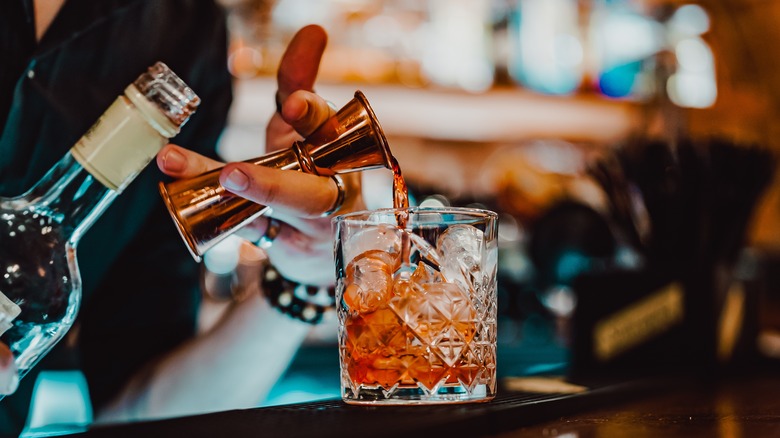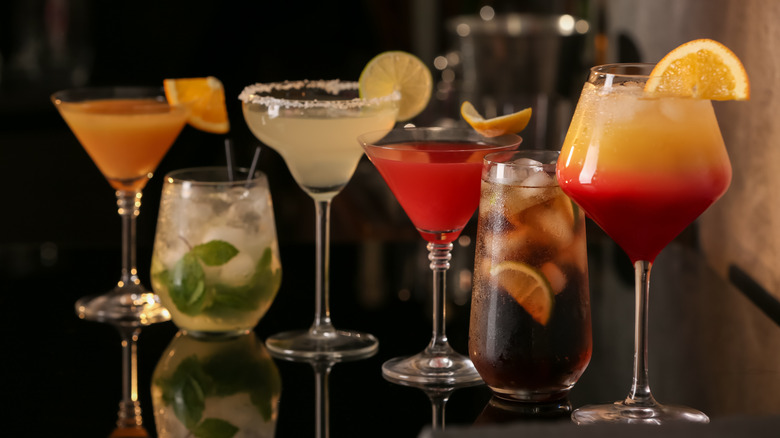Why You Should Consider Pouring Expensive Ingredients Last In Cocktails
Restaurants, for the most part, are known for their culinary dishes. There are exceptions, of course. Dinner at Alinea in Chicago or Copenhagen's Noma is about the experience, as much as it is about the food. But in recent years, restaurants have given much more focus to their bars and cocktail menus. Establishments are suddenly seeking out mixologists rather than bartenders. MasterClass notes that, while bartenders are well versed in an array of cocktails, are familiar with customer service, and make sure the bar is well stocked, mixologists create new and original cocktails, stay attuned to the growing industry trends, and often act as consultants for several bars and restaurants.
People are often in a hurry to recreate these new and exciting drinks at home, either to save some cash or because snagging reservations has become so difficult. The concept of mixing up drinks at home was never more popular than during the 2020 coronavirus pandemic. According to Market Watch, many bars shipped cocktail kits to thirsty consumers to mix, shake, and enjoy from their own homes, while others offered virtual cocktail-making classes. What people realized is that whipping up a drink sometimes isn't as simple as mixing together an array of liquors and juices. Often, order matters.
The best isn't always first
Most home mixologists will add cocktail ingredients to their highball or martini glass according to what is listed in order on the recipe they're using, per The Spruce Eats. It is then mixed or shaken as directed. But, Delish suggests otherwise. According to the website, you should pour in the most expensive ingredient (most likely the liquor) last, regardless of how it's listed in the recipe. The reason is that if you accidentally overpour an ingredient or otherwise ruin the cocktail beyond drinkability and need to start again, you won't be pouring your best booze down the drain. Saving it for last ensures your tipple is safe.
This method of cocktail building works best for drinks that you stir or shake before serving, like a White Russians, a Bloody Mary, or an Old Fashioned. Like any instance when you're not sure which way is best, use your common sense. For example, a mojito is typically topped with club soda. You don't want to top the drink with rum instead. And with those pretty layered drinks, you probably want to stick to the order of the recipe, lest your red, white, and blue Independence Day drink becomes white, red, and blue. All in all, making cocktails should be fun, from jigger-measuring to drinking the last drop, so while there are no solid rules, this method is less likely to cause tears due to wasted alcohol.

